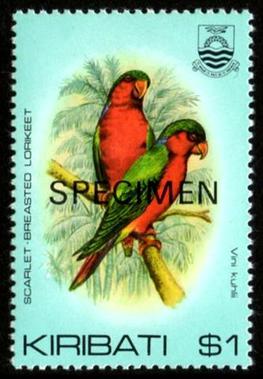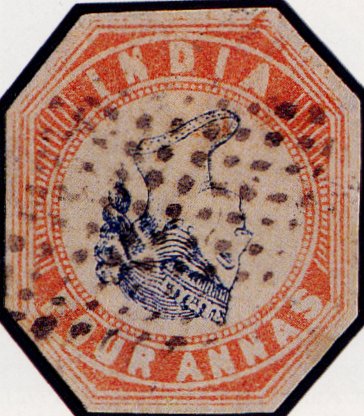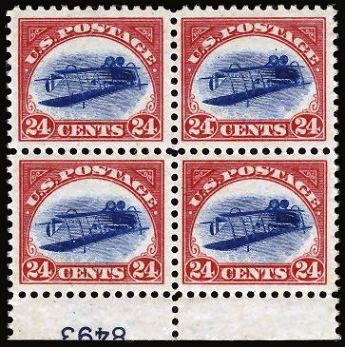Of so many other things, the British have to be credited again for coming up with the practice of postage stamps. Sir Rowland Hill, knighted for reforming British Postal System, is called Father of Postage Stamps. Prior to postage stamps, postmarks depicting the charges were imprinted and the charges were to be paid by the recipient. Charges, exorbitantly high, were levied according to the distance and number of sheets used. And many a times; the receivers would refuse to pay. Rowland Hill’s famous pamphlet on Postal reforms suggested few novel but presumptuous changes: that charges be levied according to weight rather than distance; that postage be paid beforehand by the sender. For pre-payment of the postage, he suggested that small adhesive pieces of paper of various denominations be used those could be affixed on the postal materials. His proposals were accepted in 1839 amid skepticism and thus were stamps born.
 |
| An exhibition cover commemorating Sir Rowland Hill |
Postal correspondence increased dramatically by over cent per cent in the first few months and in 1840, the world’s first postage stamps were introduced: Black Pennnies. They were imperforated. The system was a success and later replicated in various colonies of British and over the world. Stamps were first introduced in India in the province of Sindh in the year 1852. Scinde Dawks, as they were called, were of ½ Anna denominations each and were the first stamps to be used in Asia. These became obsolete in the year 1854 and were succeeded by Red Lithos of ½ Anna, 1 Anna, 2 Anna, and 4 Anna which could be used throughout British India. Red Lithos derived their name from the printing technology used, namely: lithography and were printed and designed in Calcutta. Present day India stamps are printed at Nashik Security Press.
The system of stamps was soon replicated in all the British colonies. The British stamps did not have name of the country imprinted — a tradition which continues to this day. Mostly the stamps would feature the face of the ruling queen or king of the British Empire. At the end of colonialism, several themes, important events, celebrities, monuments, flora and fan una et cetera were incorporated. Philately first emerged as a hobby in Germany. Britain, Germany and China caboast of most number of philately enthusiasts. Philately, once a passion restricted to elite, is now gaining prominence among everyone.
 |
| Black Pennies, 1840 |
 |
| Red Litho, 1854 |
Some important terms related to philately:
Definitive Stamps: are the general purpose stamps which one usually gets at postal counters. They are printed in bulk and are of cheaper paper and ink quality. They are printed over longer period of time. They are usually smaller in size.
 |
| India: First definitive Series |
Commemorative Stamps: are used to commemorate important events of significance, important personalities, national resources et cetera. They are bigger in size, of glossy finishing, and of better paper and ink quality.
 |
| First Commemorative Stamps of India: Independence Series, 1947 |
Proofs: are samples of stamps prior to their printing, to check the quality of ink and design at various stages of production. Proofs are usually taken on hard cover of white paper and are dried and check-tested for results.
 |
| Proof to check the ink |
Essays: are various designs of proposed stamps submitted to postal authorities. Not all essays are used. They are usually altered to better the quality of ink and design.
 |
| Essays to check various designs |
Fiscals/Revenue: stamps are stamps used to taxation or bureaucratic purposes. If postal stamps are used, they’ll bear different cancellations.
 |
| Fiscal Stamps |
Cancellations: the cancellation marks used on stamps. Various different types of cancellations are used and the value of stamps may depend upon the type of cancellation on it.
Used: stamps which are cancelled. Used stamps are usually of more significance to philatelists.
Mint: stamps which are not used. They gum is usually preserved else may decrease the value of stamp.
Watermark: the paper used to print stamps bears a watermark which can be seen against any light source. Same stamps may be printed on different watermark papers thus differentiating the value of stamps.
Catalogue: a book containing details of stamps in chronological order and stating the importance, valuations, and intricate details about stamps. Catalogues published by Stanley Gibbons are most widely used as a standard reference to valuations.
Denomination/Face-value: the value of stamps printed on it.
Catalogue-value: the value of stamps printed in a catalogue.
Perforations: are the holes punched to make the separation of stamps easy.
Perforation Gauge: is used to measure the perforation of the stamps. Same design of stamps may be printed with different perforation values.
 | ||
| Perforation Gauge |
Gutters: are hardly used these days. These are spaces between blocks of perforated stamps to make separation of stamps easy.
 |
| A Gutter Block |
Dyes: the die used to print stamps. Same stamps are sometimes printed using different dyes.
Shades: are again little color variations used to print the same design of stamps.
Maximum cards: are the post cards of the same design as stamps with the stamp pasted and cancelled on the picture sides, on the date of release of stamp. These are usually sold to philately enthusiasts.
 |
| A Maximum Card |
 |
| A First Day Cover |
O.H.M.S: abbreviation of On His Majesty’s Service. Cancellations on government stationary during the time of British Empire.
 |
| OHMS |
Omnibus: issue of stamps of the same or nearly same design by more than one country; usually, in the times of British Empire.

Omnibus: Same design of stamps used for different Commonwealth Nations
Specimens: are stamps sent to various postmasters across the countries to be used as reference so that forgeries and fake stamps can be avoided. They have ‘SPECIMEN’ imprinted on them.; practiced mostly in the times of British Empire.
 |
| Specimen |
Hinges: are small gummed pieces of paper used to affix stamps on sheets by stamp collectors. Hinged stamps are valued lesser than unhinged ones.
 |
| Hinges |
Mounts: are transparent plastic covers used to protect stamps from external environment and affix them on collector’s sheets.
 |
| Mounts |
Tongs: are tweezers used to handle stamps as using hands may affect the design and gum parameters.
 |
| Tongs |
Overprints: are texts printed on stamps. Princely states in India would use the British stamps with the name of their state overprinted on it. A country’s stamps may be overprinted for use in abroad.
Pairs: two stamps which are un-separated.
Square: a square block of stamps; usually four.
Stock album: An album with plastic strips to hold stamps.
 |
| A Stamp Stock Album |
Some of the most famous stamps:
British Guyana 1 cent Magneta, 1856:
Mauritius “Post Office”, 1847:
These stamps have legendary status among philately enthusiasts. Instead of imprinting “Post Paid”, erroneously, “Post Office” was printed. This error was corrected in later issues. The design was inspired from ‘Black Pennies’. Estimated price: one million pounds.
It is an error variety of first lithos of India. The head of the Queen was mistakenly printed upside down. A few of such survive including one in the Govt. of India collection, New Delhi.
Scinde Dawks, 1852:

First stamps of Asia.
Black Pennies, 1840:
First stamps of the world.
Inverted Jenny, US, 1918:
Image of the aero plane was accidently printed upside down. Estimated price: half a million dollars.
Mahatma Gandhi, Rs 10, “Service” Overprint, 1948:
The Rs. 10 stamp was among the commemorative stamps issued on Gandhi and was for a brief period a hundred stamps were used as revenue stamps by Rajagopalachari, Governor of India. Later, it was observed that commemorative stamps should not be used as revenue stamps. Only eight such stamps survive. Forgeries of ‘Service’ overprint are known to exist.
Azad Hind Series:
© Rakesh 2011














